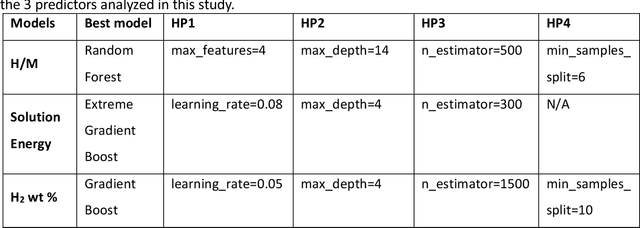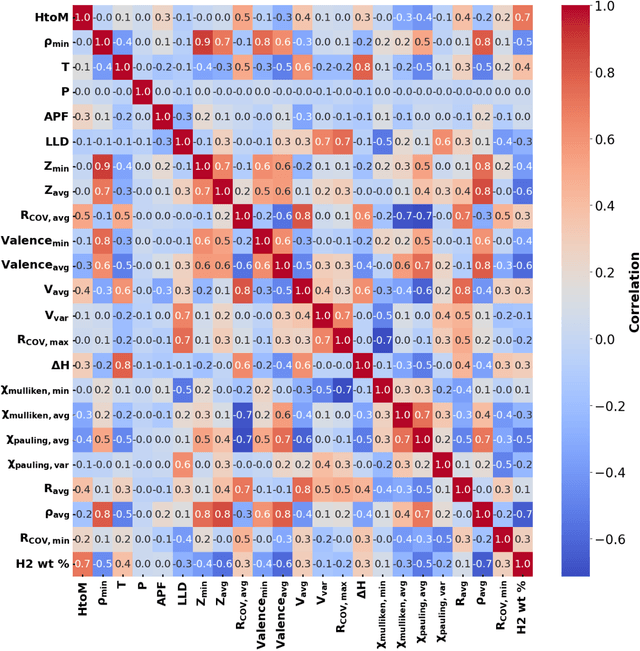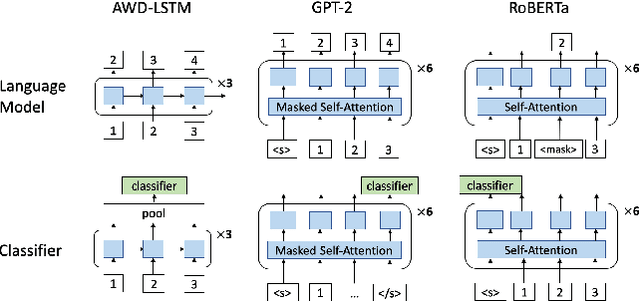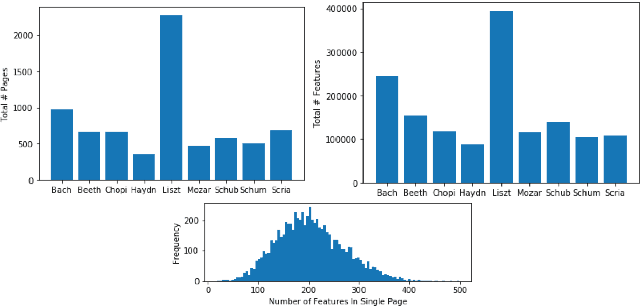Kevin Ji
Machine learning driven search of hydrogen storage materials
Mar 06, 2025



Abstract:The transition to a low-carbon economy demands efficient and sustainable energy-storage solutions, with hydrogen emerging as a promising clean-energy carrier and with metal hydrides recognized for their hydrogen-storage capacity. Here, we leverage machine learning (ML) to predict hydrogen-to-metal (H/M) ratios and solution energy by incorporating thermodynamic parameters and local lattice distortion (LLD) as key features. Our best-performing ML model provides improvements to H/M ratios and solution energies over a broad class of ternary alloys (easily extendable to multi-principal-element alloys), such as Ti-Nb-X (X = Mo, Cr, Hf, Ta, V, Zr) and Co-Ni-X (X = Al, Mg, V). Ti-Nb-Mo alloys reveal compositional effects in H-storage behavior, in particular Ti, Nb, and V enhance H-storage capacity, while Mo reduces H/M and hydrogen weight percent by 40-50%. We attributed to slow hydrogen kinetics in molybdenum rich alloys, which is validated by our pressure-composition isotherm (PCT) experiments on pure Ti and Ti5Mo95 alloys. Density functional theory (DFT) and molecular simulations also confirm that Ti and Nb promote H diffusion, whereas Mo hinders it, highlighting the interplay between electronic structure, lattice distortions, and hydrogen uptake. Notably, our Gradient Boosting Regression model identifies LLD as a critical factor in H/M predictions. To aid material selection, we present two periodic tables illustrating elemental effects on (a) H2 wt% and (b) solution energy, derived from ML, and provide a reference for identifying alloying elements that enhance hydrogen solubility and storage.
Composer Style Classification of Piano Sheet Music Images Using Language Model Pretraining
Jul 29, 2020



Abstract:This paper studies composer style classification of piano sheet music images. Previous approaches to the composer classification task have been limited by a scarcity of data. We address this issue in two ways: (1) we recast the problem to be based on raw sheet music images rather than a symbolic music format, and (2) we propose an approach that can be trained on unlabeled data. Our approach first converts the sheet music image into a sequence of musical "words" based on the bootleg feature representation, and then feeds the sequence into a text classifier. We show that it is possible to significantly improve classifier performance by first training a language model on a set of unlabeled data, initializing the classifier with the pretrained language model weights, and then finetuning the classifier on a small amount of labeled data. We train AWD-LSTM, GPT-2, and RoBERTa language models on all piano sheet music images in IMSLP. We find that transformer-based architectures outperform CNN and LSTM models, and pretraining boosts classification accuracy for the GPT-2 model from 46\% to 70\% on a 9-way classification task. The trained model can also be used as a feature extractor that projects piano sheet music into a feature space that characterizes compositional style.
 Add to Chrome
Add to Chrome Add to Firefox
Add to Firefox Add to Edge
Add to Edge